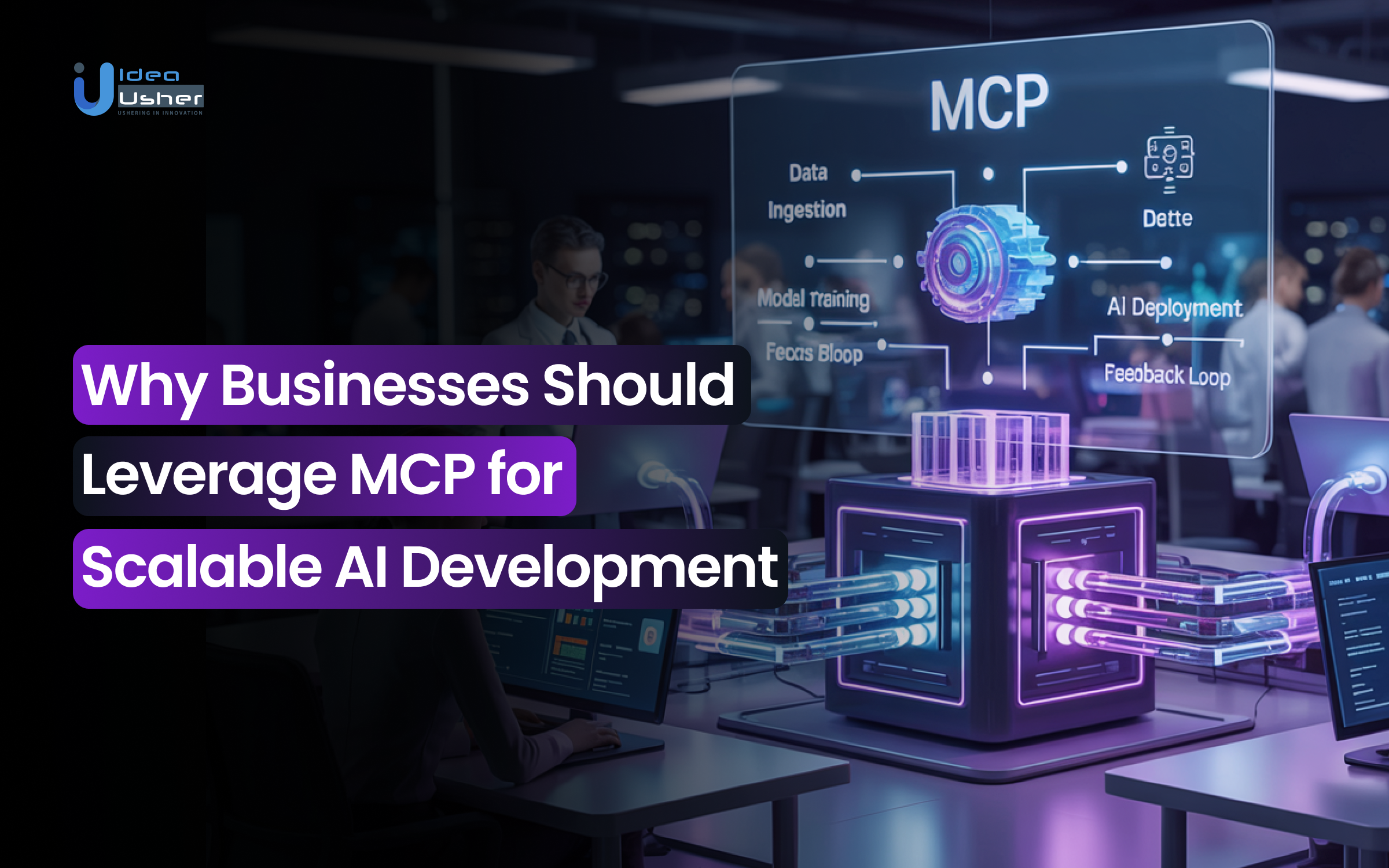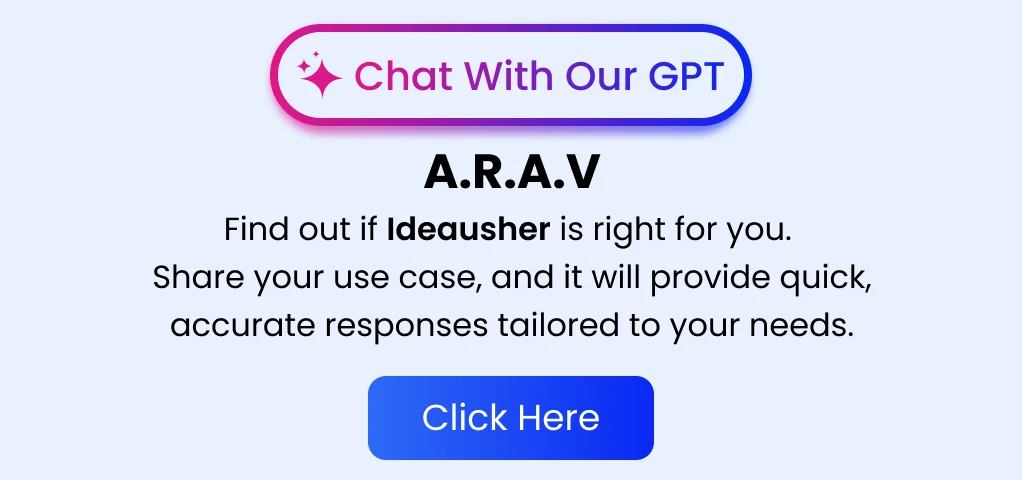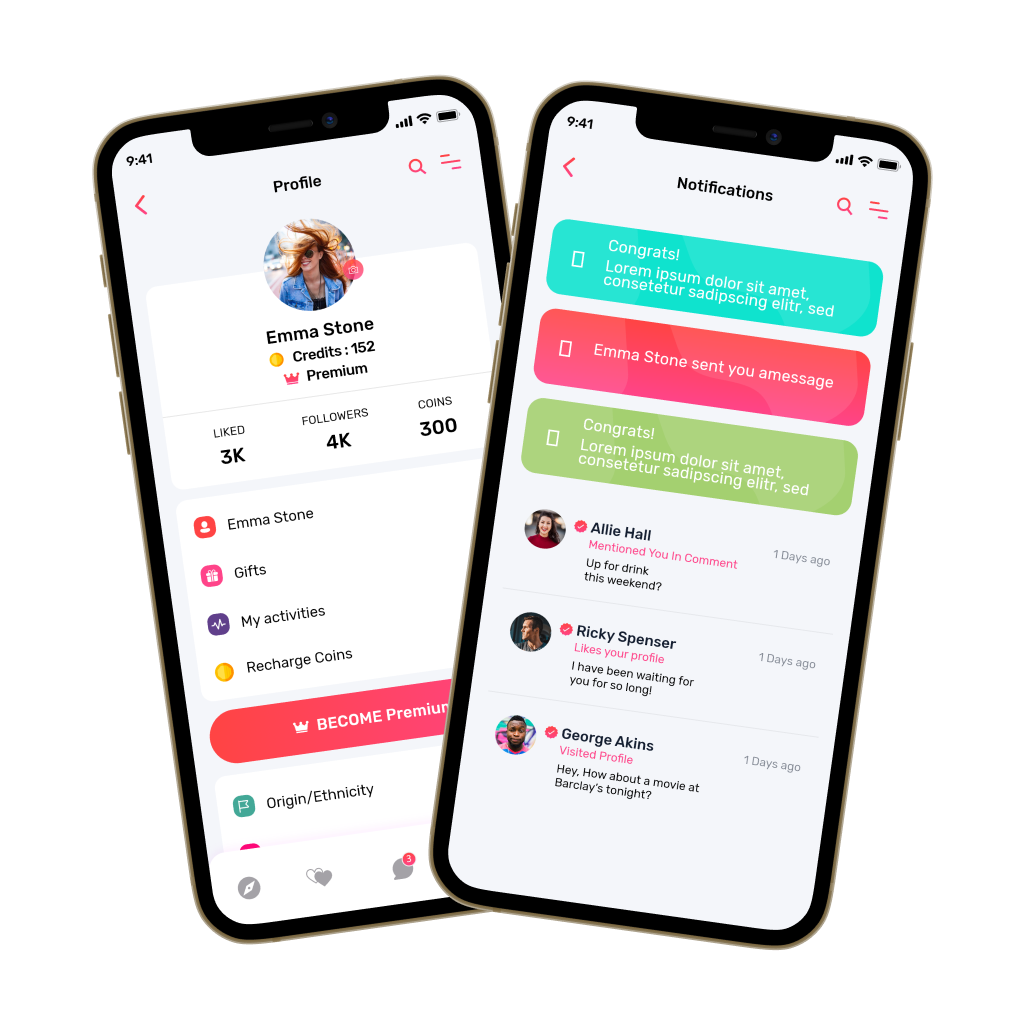As businesses dive deeper into artificial intelligence, finding efficient and scalable solutions has become a top priority. One great way to do this is by using Model Context Protocols. They help AI systems connect seamlessly with various data sources and tools, making them more flexible and easier to scale as the business grows. For example, MCP allows AI to pull real-time data from platforms like Google Drive, Slack, or GitHub, ensuring that responses are accurate and timely.
By using MCP, businesses can cut down on maintenance time, speed up deployment, and create a more efficient experience as they evolve. This means fewer roadblocks and more focus on growth. In the end, leveraging MCP not only helps save money and improve productivity but also keeps companies ahead of the game, boosting profitability and setting them up for long-term success.
In this blog, we’ll explore how Model Context Protocols can make AI development more scalable, efficient, and profitable for businesses.
What is the Model Context Protocol?
Model Context Protocol is a framework designed to address the core challenges businesses face when scaling AI. Unlike traditional systems that rely on static, one-size-fits-all approaches, MCP introduces dynamic, context-aware optimization. This means AI models can adapt in real time to changing conditions, reducing complexity and cost while improving overall performance.
Think of MCP as a self-tuning engine for AI.
- Traditional AI is like a fixed recipe that never changes, no matter how the ingredients vary.
- MCP-powered AI is like a smart chef who adjusts flavors dynamically based on the ingredients they have at hand.
Core Features of MCP
Here are some of the core features of the model content protocol,
1. Adaptive Learning: AI That Evolves Instantly
MCP enables AI models to self-adjust based on real-time shifts in data without needing to go through time-consuming manual retraining processes. This makes the AI much more responsive and agile in reacting to changes in the environment.
2. Resource Efficiency: Do More with Less
One of the most significant issues businesses face with AI is the excessive cost of computational resources. MCP combats this by optimizing model parameters dynamically, ensuring that the system uses only the resources it needs at any given moment.
3. Seamless Scalability: Grow Without Limits
As businesses scale, they often face the challenge of adapting their AI systems to handle increasing data volumes and more complex tasks. MCP eliminates this issue by offering elastic scalability. The system can grow or shrink depending on the demand, handling sudden spikes in data or new use cases effortlessly.
4. Context-Aware Intelligence: Smarter Decision-Making
MCP models are designed to understand and respond to different operational conditions. This context awareness enables them to optimize themselves for specific tasks. For example, a model might adjust its level of accuracy or latency depending on the environment in which it’s being used..
MCP vs. Traditional AI: A Quick Comparison
| Feature | Traditional AI | MCP-Powered AI |
| Adaptation Speed | Manual retraining (weeks/months) | Real-time adjustments (minutes) |
| Compute Costs | High (brute-force scaling) | Optimized (dynamic allocation) |
| Scalability | Limited by fixed architectures | Elastic, handles unpredictable growth |
| Maintenance Effort | High (constant tuning needed) | Low (self-optimizing) |
Why MCP Matters Now?
As AI adoption continues to rise, businesses face mounting pressure to move faster, more cost-effectively, and with more flexibility. Traditional AI models that lack scalability and adaptability can become major bottlenecks. MCP bridges this gap by providing faster, cheaper, and more adaptable AI solutions that are ready for production.
Key Market Takeaways for Artificial Intelligence
According to GrandViewResearch, the AI market is growing at an impressive pace, expected to jump from USD 279.22 billion in 2024 to USD 1,811.75 billion by 2030. This growth is fueled by better computational power, easier access to data, and the increasing use of AI in industries like healthcare, finance, retail, and manufacturing.
Source: GrandViewResearch
AI is helping businesses by analyzing large datasets and providing valuable insights that improve efficiency and competitiveness. MCP plays a key role by allowing AI systems to integrate seamlessly into existing workflows. These protocols help AI adapt to specific contexts, making services more personalized and predictions more accurate.
Several exciting partnerships and applications show how MCP is transforming AI. Tools like OpenAI’s GPT-4, which powers ChatGPT and GitHub Copilot, are great examples of AI’s adaptability across industries.
Google’s PaLM 2 is another example supporting multilingual content and coding. Additionally, partnerships like Stability AI’s Stable Diffusion for text-to-image generation are helping industries like creative design, while Microsoft’s AI integration into Bing Chat is enhancing user experience. These innovations are driving AI’s impact across various sectors.
Work with Ex-MAANG developers to build next-gen apps schedule your consultation now
The Bottlenecks of Conventional AI Deployment
Traditional AI integration often involves connecting LLMs to enterprise systems through custom-built, point-to-point links. While this may work on a small scale, it introduces scalability challenges that can become major roadblocks as organizations grow. Here’s a breakdown of the problems faced with conventional AI deployment:
1. Fragmented Integration Architecture
Each AI model needs its own custom connectors to databases, APIs, and other tools. This results in a tangled web of dependencies that make maintenance a nightmare, complicate updates, and make scaling across models inefficient.
2. Security and Compliance Risks
Direct AI model access to databases often bypasses key security layers, putting data at risk. Without centralized access control, ensuring compliance with data privacy regulations like GDPR, SOC 2, or HIPAA becomes incredibly difficult.
3. Performance and Latency Issues
Ad-hoc API calls and inefficient query handling cause slow response times and heavy computational load. This leads to poor user experience in real-time AI applications, like chatbots or analytics dashboards, due to high latency.
4. Lack of Observability & Auditability
There’s little standardization when it comes to tracking AI-generated queries and accessing data logs. Enterprises struggle with compliance audits and debugging, especially when unexpected behavior arises from AI models.
5. Vendor & Model Lock-in
Proprietary integrations create dependence on specific LLM providers (e.g., OpenAI, Anthropic) or legacy systems. Switching to better-performing models or data sources becomes expensive and time-consuming as it requires reworking integrations.
How does the MCP Solve These Challenges?
MCP offers a solution to these scalability issues by acting as a unified middleware layer that simplifies and standardizes AI integrations. Here’s how it directly tackles the key pain points:
1. Standardized, Modular Connectors
- MCP provides reusable, pre-built connectors for common systems (SQL, REST APIs, CRM platforms).
- Outcome: This eliminates the need for custom integration work, making it easy to scale AI deployments across multiple models without reinventing the wheel.
2. Centralized Security & RBAC Enforcement
- MCP introduces a dedicated security layer that validates every LLM request based on enterprise identity and access management (IAM) policies.
- Outcome: This ensures least-privilege access and reduces the risk of unauthorized data exposure, making compliance with security standards more achievable.
3. Optimized Query Execution & Caching
- MCP’s intelligent routing reduces redundant API calls and optimizes database queries for better efficiency.
- Outcome: This leads to 30-50% faster response times compared to direct LLM-to-system integrations, improving the user experience, especially in real-time applications.
4. Built-in Audit Logs & Monitoring
- Every LLM interaction is automatically logged with important metadata (e.g., timestamps, user info, query context).
- Outcome: This simplifies compliance and offers real-time monitoring and insights into AI behavior, which is critical for both regulatory audits and troubleshooting.
5. Agnostic to Models & Data Sources
- MCP decouples AI models from backend systems using a protocol-based interface.
- Outcome: This means enterprises can easily swap models (e.g., GPT-4 → Claude 3) or databases (e.g., MySQL → Snowflake) without having to rewrite their integrations.
Technical Advantage: MCP as an AI Orchestration Layer
MCP is more than just a connector. It’s an AI orchestration layer designed to bring efficiency, flexibility, and scalability. Key advantages include:
- Data Normalization: MCP normalizes data formats (e.g., JSON to SQL to GraphQL) so that LLMs can consume them seamlessly, no matter the system.
- Retry Logic & Rate Limiting: It automatically implements retry logic and rate limiting, preventing API overloads and ensuring smooth operations.
- Hybrid Cloud/On-Prem Support: MCP supports both hybrid cloud and on-premises deployments, making it an ideal choice for regulated industries that require flexibility in infrastructure.
By simplifying the integration process and handling the complex interactions between LLMs and enterprise systems, MCP enables businesses to scale AI deployments effectively, with enhanced security, compliance, and performance.
MCP Architecture and Core Components: How MCP Works
MCP is designed to tackle the common challenges faced in AI deployment, such as integrating with enterprise systems and ensuring data security, scalability, and performance. Let’s break down how it works and the key components that make it an effective solution for AI development.
Modular, Plug-and-Play Architecture
At its core, MCP eliminates integration bottlenecks. It acts as a universal bridge between AI models and various enterprise systems, such as databases, APIs, and legacy applications. Instead of developing custom integrations for each use case, businesses can leverage MCP’s pre-built connectors to easily link AI models to their existing infrastructure.
This plug-and-play approach means businesses don’t need to reinvent the wheel every time they add a new model or data source. MCP abstracts the complexities of integration, letting teams focus on innovation rather than dealing with integration headaches.
Core Components of MCP
MCP is designed with several key components that together ensure the efficiency, security, and scalability of AI operations. Let’s look at each of these components:
1. MCP Client Interface
The MCP Client Interface is the communication layer between the LLM (or AI model) and the MCP server. It’s responsible for receiving function calls from the AI model and forwarding them to the MCP server for processing. This ensures that the AI models can securely interact with enterprise systems without directly accessing sensitive data.
- Role: Facilitates the connection between AI models and MCP’s core system.
- Benefit: Simplifies communication and ensures a consistent interface for all integrations.
2. MCP Server
The MCP Server serves as the heart of the system, hosting the standardized connectors for various enterprise systems. It translates requests from the AI model (like retrieving customer data or executing SQL queries) into system-specific commands.
- Role: Acts as the central hub for all AI interactions with external systems.
- Benefit: Standardizes the communication process, making it easier for businesses to manage integrations without custom coding.
3. Security and Access Control Layer
The Security and Access Control Layer enforces role-based access control (RBAC), ensuring that only authorized AI models can access specific data. It maintains strict compliance with security policies, such as GDPR and HIPAA, and ensures that sensitive information is protected at all times.
- Role: Manages permissions and ensures that sensitive data is only accessed by authorized entities.
- Benefit: Helps businesses maintain data privacy and security while using AI.
4. Logging and Monitoring Module
The Logging and Monitoring Module provides businesses with an audit trail for every interaction that the AI models have with enterprise systems. It also enables real-time performance tracking, allowing teams to troubleshoot issues and monitor the efficiency of their AI operations.
- Role: Tracks all AI interactions and logs them for traceability.
- Benefit: Ensures compliance and offers transparency for auditing purposes. It also helps teams optimize performance and troubleshoot in real time.
5. Orchestration and Configuration Management
This component simplifies the deployment and scaling of multiple MCP connectors across the enterprise. It allows IT teams to update or modify integrations without disrupting the ongoing AI workflows, providing a more agile environment for continuous improvement.
- Role: Manages the deployment, scaling, and configuration of integrations.
- Benefit: It ensures smooth operations even as AI models and data systems evolve.
How MCP Works in Practice?
MCP follows a well-defined workflow to ensure that AI models can seamlessly interact with enterprise systems in a secure, scalable manner. Here’s how it works:
- Initiation: The LLM or AI model sends a function call (e.g., retrieving customer data) via the MCP Client Interface.
- Routing: The MCP Server identifies the appropriate connector (e.g., Salesforce, SQL database) based on the type of request.
- Execution: The selected connector fetches the necessary data from the target system (e.g., database, API, or ERP) and formats it for the LLM.
- Response: The MCP Server standardizes the response and sends it back to the AI model, ensuring that the data is consistent and formatted for use.
- Audit & Security: Every transaction is logged, ensuring full traceability and compliance with regulatory requirements.
Visualizing the Process
To help illustrate how MCP streamlines the AI integration process, imagine it as a centralized AI gateway. Rather than each AI model handling its own integrations individually, MCP acts as a universal translator that simplifies connections across all enterprise systems.
This approach reduces complexity, accelerates deployment, and ensures security, making it easier for businesses to implement scalable AI solutions without sacrificing performance or compliance.
How MCP Solves the LLM N×M Integration Challenge?
LLMs like GPT-4, Gemini, and Claude are fantastic at generating human-like text, but they face a critical limitation. They often operate in isolation from real-time enterprise data. This disconnect can significantly reduce the usefulness of LLMs in dynamic, fast-paced business environments.
- Static Knowledge Cutoffs: LLMs are trained on vast datasets but often have fixed knowledge cutoffs, meaning their responses can become outdated and irrelevant in a rapidly changing business landscape.
- Manual Data Feeding: Feeding live, dynamic data into LLMs is slow, expensive, and unscalable.
- Data Isolation: LLMs don’t have direct access to live business data like CRM, ERP, or APIs, making them less effective in providing real-time insights.
The N×M Integration Nightmare
Enterprises typically have:
- N = Multiple AI models (LLMs, computer vision models, predictive analytics models, etc.)
- M = Disparate data sources (databases, APIs, cloud storage, etc.)
Without MCP, each of the N models needs a custom integration with M data sources, resulting in N × M point-to-point connections, which introduces exponential complexity.
Here’s a breakdown of the challenge:
| Challenge | Without MCP | With MCP |
| Integration Effort | High (custom code for each model + data source) | Low (standardized connectors) |
| Maintenance | Fragile, error-prone | Centralized, reusable |
| Scalability | Costs explode as N/M grow | Linear, predictable scaling |
Without MCP, scaling and maintaining these point-to-point connections becomes increasingly difficult, expensive, and error-prone as the number of models and data sources increases.
How does MCP Fix This?
MCP acts as a universal adapter, transforming the N×M integration problem into a streamlined, simplified workflow. Here’s how it works:
1. Standardized Connectors
MCP offers pre-built integrations for common data sources like Salesforce, Snowflake, and REST APIs. This drastically reduces the need for custom code and makes it easier to connect LLMs to live business data.
2. Real-Time Context Injection
MCP allows LLMs to securely pull live data from enterprise systems on demand—without giving them direct access to sensitive data. This means LLMs can generate contextually relevant responses by accessing real-time data, like order statuses, client histories, and inventory levels, all without compromising security.
3. Governed Access Control
MCP ensures compliance with regulations like GDPR and HIPAA by managing role-based permissions. This guarantees that only authorized users and models can access specific data, providing an extra layer of security and reducing the risk of data breaches.
MCP + Function Calling: Supercharging LLM Agility
Modern LLMs support function calling (e.g., OpenAI’s tools), but this comes with several limitations:
- Ad-hoc Implementations: These function calls are often one-off integrations that lack consistency and standardized error handling.
- No Governance: Without proper governance, there’s a risk of data exposure and privacy issues.
- Vendor Lock-In: Using a specific vendor’s function calling system can lock you into their ecosystem, making it difficult to switch between LLM providers.
MCP’s Enhanced Function Calling Framework
MCP improves and enhances the function calling process, making it much more suitable for enterprise-grade AI applications:
Unified API Schem
- MCP introduces a standardized API for all function calls (whether it’s Stripe, Slack, or internal databases).
- The same MCP protocol is used for every integration, so there’s no need to rewrite functions every time an LLM gets updated or a new model is introduced.
Secure Mediation Layer
- MCP mediates and validates all function requests, ensuring that sensitive data is properly masked and logged.
- For instance, an LLM might request customer payment history, but MCP will ensure that sensitive details, like credit card numbers, are never exposed to the LLM.
Cross-LLM Portability
- With MCP, you can write once, deploy across LLMs. This means that the same function calls can be used across different LLM providers (e.g., GPT-4, Claude, Mistral).
- Use Case: If you decide to migrate from OpenAI’s GPT-4 to Anthropic’s Claude, you can reuse your existing function calls without having to re-engineer them.
Implementing Model Context Protocol for Scalable AI Development
Here are some key strategies to effectively implement MCP for scalable AI development,
1. Designing Memory-Efficient Systems
Design AI systems with memory efficiency in mind, using dynamic memory banks and sliding context windows to ensure scalability. This approach allows models to remember relevant data without consuming excessive resources, especially in high-interaction environments.
2. Integrating Retrieval-Augmented Generation Models
Integrate external knowledge sources like databases or document stores to help AI retrieve real-time information. This method ensures that the model remains contextually aware and can make more informed decisions based on current, live data.
3. Optimizing Token Allocation and Context Filtering
Implement context filtering to prioritize the most relevant data, reducing token usage and improving response speed. This ensures the AI model remains focused on essential information, making interactions more efficient and relevant.
4. Refining AI Decision-Making with Reinforcement Learning
Integrate reinforcement learning to enable the AI model to learn from feedback and improve its decision-making abilities over time. This helps the system prioritize behaviors that lead to successful outcomes, continuously refining its performance.
5. Customizing AI Models with Extended-Context Datasets
Fine-tune models using long-context datasets to enhance their ability to process extended conversations and complex workflows. This enables AI to track user sessions or conversations over time without losing important context.
6. Utilizing Hybrid Data Storage Techniques
Adopt a hybrid storage approach where high-priority data is kept in memory, and less critical information is stored externally. This reduces memory costs while still enabling efficient data retrieval when needed for decision-making.
Important Business Use Cases of MCP-Powered AI
The MCP is revolutionizing how businesses across different industries leverage artificial intelligence by enabling efficient, scalable, and dynamic integrations between AI models and various systems, databases, and APIs. Here’s a look at how MCP-powered AI is making a significant impact in various sectors:
1. Finance
In the finance sector, MCP plays a key role in enhancing risk analysis, fraud detection, and personalized financial services. By integrating AI with real-time databases and APIs, financial institutions can make more dynamic, informed decisions.
- JPMorgan Chase uses AI tools integrated with MCP-like protocols to analyze market trends and optimize trading strategies.
- Stripe employs MCP-inspired systems to streamline payment processing, ensuring security and efficiency during transactions.
2. Healthcare
In healthcare, MCP enables seamless access to patient records, medical imaging databases, and research data, which is crucial for accurate diagnostics and treatment recommendations.
- IBM Watson Health uses MCP-like systems to integrate clinical data and perform predictive analytics for patient care.
- Aidoc, a startup, leverages MCP-powered frameworks to connect AI models with radiology imaging systems, allowing for quicker disease detection and improving treatment outcomes.
3. Education
In the education sector, MCP enables personalized learning by connecting AI models with student databases, curriculum tools, and assessment systems.
- Coursera employs MCP-like frameworks to recommend courses tailored to individual learners based on their profiles and preferences.
- Quizlet integrates MCP-powered AI to adapt study plans in real time, helping students improve based on their performance and learning needs.
4. Media and Entertainment
MCP is transforming the media and entertainment industries by improving content recommendations and content creation processes.
- Netflix uses MCP protocols to enhance its recommendation engine, tailoring movie and show suggestions based on individual viewer behavior and preferences.
- Adobe integrates MCP-powered AI into tools like Photoshop and Premiere Pro, assisting creatives in generating high-quality content more efficiently through AI-driven capabilities.
5. Retail
The retail industry is benefiting from MCP by optimizing inventory management, improving customer personalization, and automating supply chain operations.
- Amazon uses MCP-inspired protocols to enhance its recommendation engines, connecting real-time customer data with product databases for highly tailored shopping experiences.
- Walmart integrates AI with MCP-like systems to predict demand patterns and enhance logistics, improving supply chain efficiency and reducing costs.
6. Enterprise IT & Knowledge Management
For enterprise IT, MCP makes it easier to integrate AI tools that improve knowledge management and automate workflows across organizations.
- Slack uses MCP-inspired systems to connect AI models to its communication platforms, automating tasks and improving team collaboration.
- GitHub also benefits from similar protocols, using AI to streamline code reviews and repository management, making development processes more efficient.
Who Should Consider Using MCP?
If your company struggles with any of the following issues, MCP could be the game-changer you need.
1. You Use Multiple AI Models Across Your Business
Running multiple AI models, like large language models, computer vision, recommendation engines, or predictive analytics, can lead to issues with version control, inconsistent outputs, or integration headaches.
How MCP Helps:
- Unified Protocol: MCP brings all AI models under one standardized framework, making integration seamless and manageable.
- Reduced Overhead: It reduces development overhead by more than 80% through standardized connectors, allowing faster deployment and easier maintenance.
2. Your AI Costs Are Spiraling Out of Control
AI infrastructure costs are becoming overwhelming, whether it’s from cloud compute, GPU resources, or maintaining complex data pipelines.
How MCP Helps:
- Cost Reduction: MCP helps cut AI operations costs by 30-60% through dynamic resource optimization, ensuring you’re only using what you need.
- Adaptive Model Tuning: It eliminates redundant processing, further reducing cloud and resource costs.
3. You Need Real-Time AI Adaptability
If AI models cannot keep up with live data changes or suffer from long retraining cycles, valuable opportunities are lost, and performance suffers.
How MCP Helps:
- Real-Time Adaptability: MCP enables sub-second model adjustments, allowing AI to react instantly to new data.
- Context-Aware Decision-Making: It supports dynamic pricing, fraud detection, and other real-time decisions, ensuring that your models stay relevant and responsive to the latest information.
Conclusion
Businesses should embrace MCP for scalable AI development because it makes AI integration smoother, reduces costs, and helps scale up AI solutions quickly and efficiently. With MCP, companies can deploy smarter, more adaptable AI tools that boost productivity, improve customer experiences, and open up new ways to generate revenue.
Looking to Develop Scalable AI Using MCP?
At Idea Usher, we’ve got you covered! With over 500,000 hours of coding experience and a talented team of ex-MAANG/FAANG developers, we specialize in building AI solutions that are not only scalable but also efficient and adaptable to your business needs. We’re passionate about turning your ideas into innovative, AI-powered systems that drive growth and success.
Check out our latest projects to see the kind of impactful work we can deliver for you!
Work with Ex-MAANG developers to build next-gen apps schedule your consultation now
FAQs
Q1: How can MCP help in developing scalable AI?
A1: MCP helps in developing scalable AI by providing a standardized framework that simplifies integration across multiple AI models and systems. It ensures that models can easily scale, adapt to new data, and work efficiently, reducing complexity and operational costs while enabling faster deployment and better performance as your AI needs grow.
Q2: What is Model Context Protocol in Anthropic AI?
A2: In Anthropic AI, the MCP is a framework designed to ensure that AI models can effectively understand and respond to various contexts by integrating seamlessly with external data sources and APIs. It allows AI models to make better, context-aware decisions and improves how AI systems interact with real-time data, making them more dynamic and adaptive.
Q3: What is MCP used for?
A3: MCP is used to streamline the integration of multiple AI models and systems, enabling them to interact more efficiently with data sources, APIs, and internal systems. It helps businesses build scalable, flexible, and cost-effective AI solutions by providing a standardized way to manage and optimize AI workflows.
Q4: What is MCP and how does it work?
A4: MCP is a set of standards that defines how AI models interact with external data and systems. It works by providing a structured framework for connecting AI models to real-time data, ensuring they can adapt quickly, make context-aware decisions, and deliver better, more personalized results with less overhead.




















